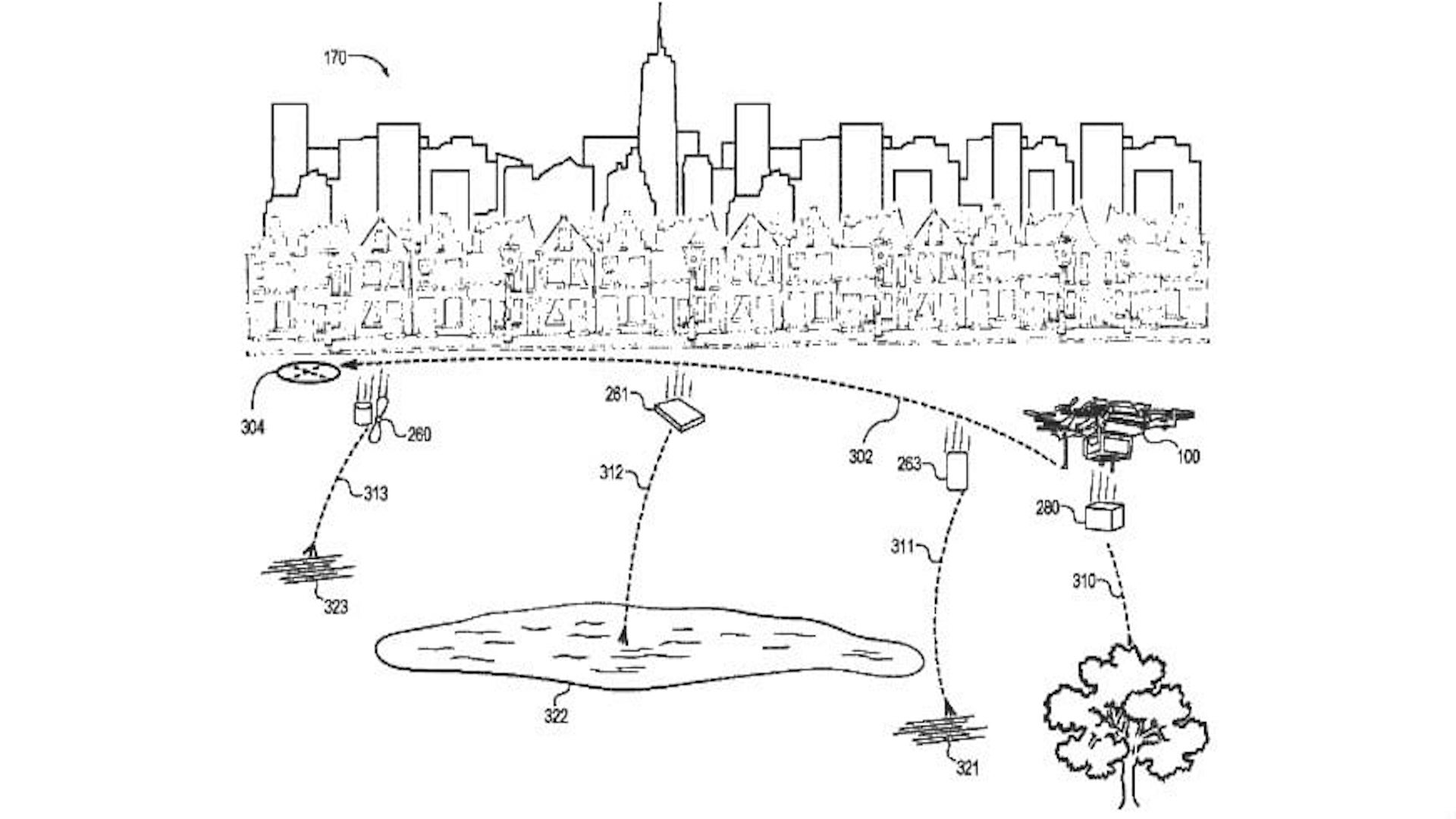

Amazon has been securing a multitude of patents this year in preparation for a seemingly-inevitable nationwide drone delivery network being configured in recent months. With the current White House administration taking significant steps to expand drone testing ahead of the implementation of drone delivery regulations, Amazon is wise to stay a few steps ahead. On Tuesday, the company filed a drone-related patent, which the official document labels as “directed fragmentation for unmanned airborne vehicles.” In other words, developing drones that would be dismantled in mid-air, with its parts safely dispersed before hitting the ground.
We’ve reported on the tech giant’s previous patents, like a drone-chute that would safely release an item onto your lawn, or train-mounted drone hubs that could charge unmanned aerial vehicles in between deliveries. Amazon even patented technology that would allow drones to talk to nearby persons and provide helpful commands or directions as a safety measure. What was once an online bookstore has turned into the virtual go-to for an entire generation’s everyday needs, and the delivery titan is extremely focused on transitioning to the next phase of its business model: Delivery via drone.
Tuesday’s patent describes a far more sophisticated method of disintegration than one might expect. Once a drone is recognizably malfunctioning, and a dispersing of its parts becomes the most effective way to maximize the safety of those below, the UAV doesn’t simply break apart, all at once. Amazon’s drones are fitted with something called a “fragmentation controller” which “develops a fragmentation sequence for one or more of the components based on the flight path, the flight conditions, and terrain topology information, among other factors,” according to the patent filing. In other words, the tech within these drones allows for a customized, location-specific process of dispersing the machine’s parts. That’s pretty impressive thinking, not to mention the engineering and programming involved.

The aforementioned fragmentation controller is comprised of various fragmentation sequences, which are pecific dismantling behaviors for particular internal or external situations and conditions. The patent describes some of the potential external conditions for a malfunctioning drone to include “wind, rain, hail, high or low pressure regions, and other meteorological conditions,” with the one fragmentation sequence being able to “calculate the release timing, location, and flight parameters” of the drone for the most effective dismantling solution. Essentially, the tech is sophisticated enough to recognize why the drone is malfunctioning, and to then disperse all or some parts in the safest manner available at that time.
Amazon is a continuously impressive leader in the patenting of drone technology, with some solutions making complete, logical sense, and others seeming like fascinating science-fiction concepts. In the end, that is ultimately where we currently are: In between viable solutions, and imaginative reaches into the future. Amazon is most certainly not differentiating between the two too strictly, as the company seems eager to stay a few steps ahead of its competition no matter how fantastical its ideas may appear.